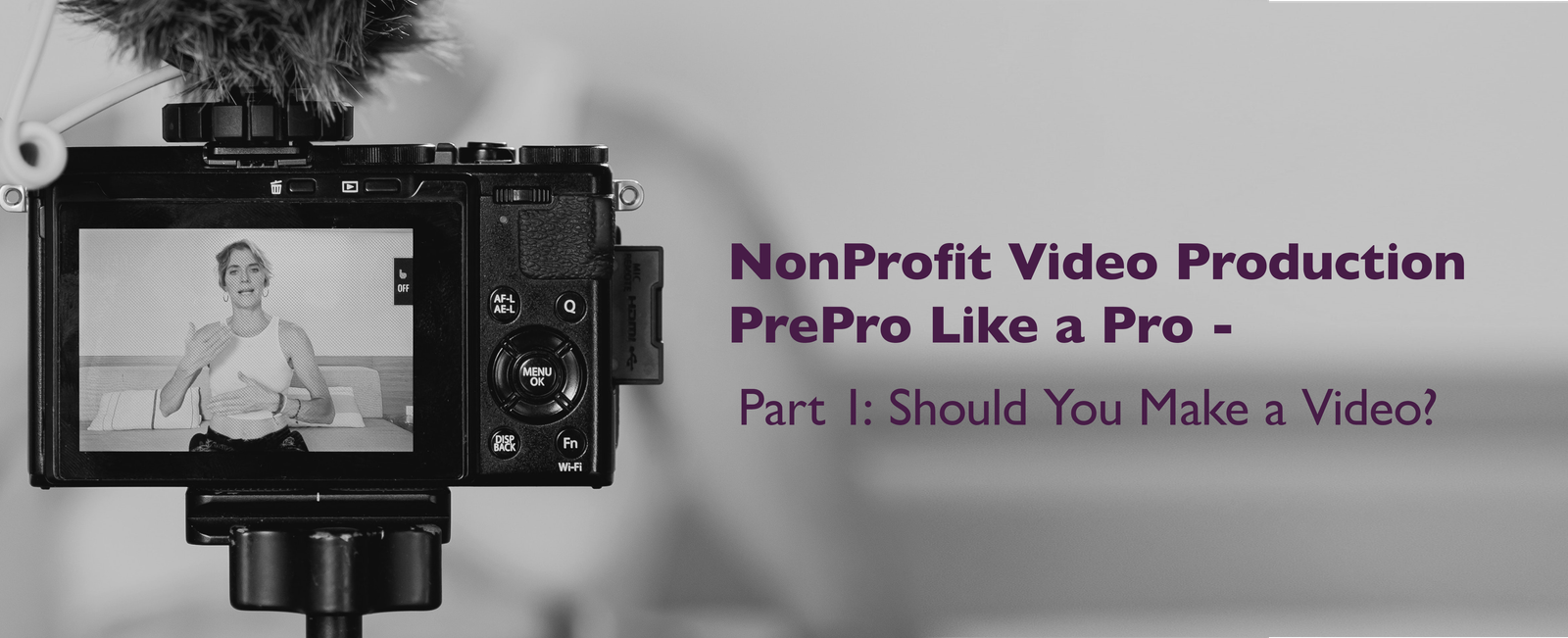Part 1: Should You Make a Video?

So, here you are. You have just decided that your non-profit organization needs a video. Before you send out invites to the premiere check your readiness to head into production against the following questions.
DO NOT proceed until you and your team can answer these questions. I know from experience (the hard way), that your creative will not live up to your expectations if you cannot do this. I read somewhere that a pilot leaving London and heading to New York will end up in South America if they are just a few degrees off on their course at the start. This is what production is like. To end up at your desired destination you need to know what story you are telling, why you are telling it, who you are telling it to, and how, where and why they will watch it.
- What story are you telling with this video?
What is it that you want to say? ‘We just want to tell people about our organization’ is not specific enough. Let’s compare specific and vague.
- We want to tell people about our organization VS we want to show people our mission statement in action.
- We want a fundraiser video to raise money VS we want to show people all the reasons we need a *new building/offer this program/buy a van*, ask them to donate, and provide a link to our donation page.
- We want to recruit volunteers VS we want to show potential volunteers what opportunities we have with our *specific* programs, what it will do for them, and how it will contribute to our mission. We will also show them how to sign-up.
The operative word is ‘show’, video is a visual medium. If you can tell your story through talking heads alone, do yourself a favour and pick a different medium, print a brochure, build a web page, or even record a podcast.
- Who is your audience? Who are you making this video for?
Everyone is not your audience. Traditional demographics such as white, females 35 – 45 with a university education aren’t particularly helpful (IMHO). I think we are better off defining demographics such as women with teenage daughters, people who have dogs, people who love to watch and play golf etc. Forget about age/gender/income/education level, even income is not an accurate signal of disposable income. Instead, focus on who is likely to have a vested interest in your video.
For example, if you are creating a fundraising video for a dog rescue in need of building additional kennels you might say, our audience is people who have donated to organizations related to animals in the past, people who have or have had dogs, people who love animals, people active in the animal-rights space. If you are making a fundraising video, chances are your audience is already familiar with your organization. If you don’t think the audience will have a previous relationship with your org then you probably don’t want to ‘ask’ for money, and instead may want to focus on how you execute your mission.
Defining your audience is hard, but it will help you answer the other questions in the list and strengthen your video production.
- Where and how will they watch your vid
This is such an important question and one that is rarely asked in preproduction, but knowing the answer will shape the video you make. Let’s take the previous example of fundraising to build kennels at the dog rescue. People generally donate to organizations they are familiar with. If this is the case then these people may click through from a newsletter, or from social media to watch a longer video. Let’s say you believe the majority of viewers will come from your existing followers and subscribers and you will host it on your YouTube channel. Imagine the scenarios in which your intended audience will watch. You plan to promote it through your newsletter, and you think people will watch it while on their mobile phones, or tablets probably commuting or while watching a TV show in the evening, or while checking their email at work. It isn’t likely people are going to sit down and watch this on their TV with popcorn – you need to keep it short and simple.
Let’s look at a completely different example. Let’s say you have a challenging issue you are trying to bring attention to. Let’s use the rights of surrogate mothers as an example. This is something that not a lot of people are familiar with. You want to educate people, and you want them to process some complex ideas and issues. You envision a program for surrogacy and reproductive rights organizations across the country that will help them hold screenings and public discussions in their communities. Showing a video at a live presentation means you can have a longer video and a Q+A. This gets maximum audience engagement value but your audience pool is smaller.
As you see these three questions help shape the length and scope of your video. Length and scope will determine your budget and your production needs. We will explore this in Part 2: How Long is a Piece of String?



No responses yet